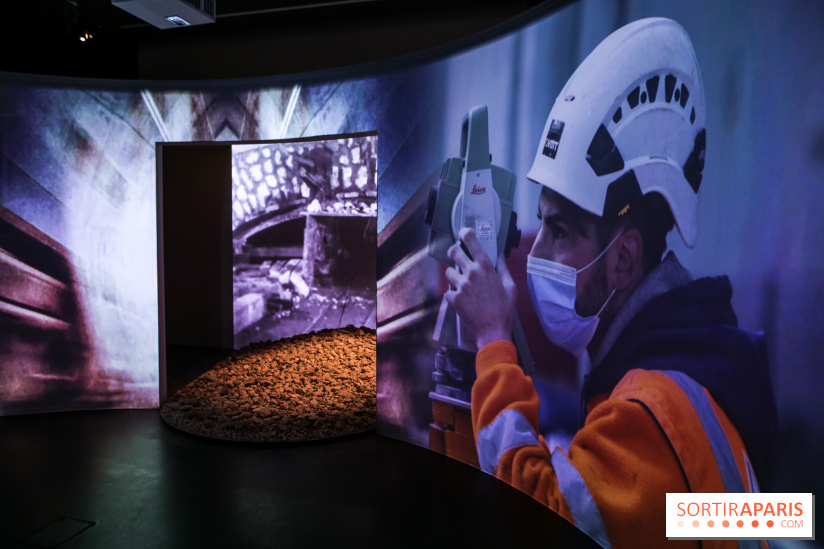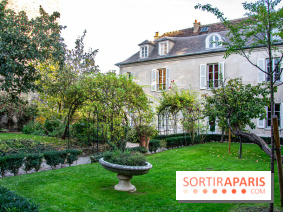From 2024, Parisians will be able to travel even further around the Île-de-France region, thanks to the opening of the first Grand Paris Express stations. By 2030, this third Île-de-France public transport network will unveil 4 new automatic metro lines (lines 15, 16, 17 and 18), the extension of a famous existing line (line 14) and the opening of a total of 68 new stations.
If all goes according to plan, line 14 will be extended to the north and south just before the start of the Paris Olympic Games in 2024. This will be followed by the gradual opening of the other lines until 2030 or 2031, depending on construction delays.
Line 14: the extension now inaugurated, what you need to know about the new stations
Considered the "backbone" of the Grand Paris Express, line 14 has now been extended to the north and south. As of Monday June 24, 2024, line 14 links Orly airport to Saint-Denis Pleyel in 40 minutes. Communes served, new stations and stations, connections... here's everything you need to know about the extension of this famous line 14 in Paris and the Île-de-France region. [Read more]
In the meantime, the Cité de l'architecture et du patrimoine, in association with Société du Grand Paris, is devoting an original exhibition to the famous metro. On view from Wednesday November 8, 2023 to Sunday June 2, 2024, this installation entitled " Métro! Le Grand Paris en mouvement " takes visitors to the heart of themetro's history. The urban transformations associated with the metro are also explored in this exhibition, which is sure to delight both young and old, unconditional lovers of the trains.
For, while the Grand Paris Express project will enable between two and three million passengers to travel every day, this future transport network will also have an impact on life all around it. In particular, it will create new transport hubs. It is also creating new types of public buildings, in particular to improve suburb-to-suburb travel.
The Cité de l'architecture et du patrimoine's exhibition addresses societal, ecological and architectural issues, as well as such fascinating subjects as French engineering and contemporary art, and aims to show how territories are developing around the axes of communication. With the arrival of these new metro stations, new points of connection between suburbs will indeed emerge.
With over 200 documents (archives, maps, photos, illustrations, paintings, manuscripts, models, collectors' items, etc.), this richly illustrated exhibition takes us back in time to 1900, the date of the birth of the metro in Paris, with the inauguration of line 1 between Porte Maillot and Porte de Vincennes. The exhibition takes a chronological look at the genesis and beginnings of the metro in Paris. We continue this journey through time by discovering more technical aspects, such as the shield method of travel, the first passage of the metro under the Seine or the complex construction of certain stations(Abbesses, Opéra, Danube...).
Another room, another step forward in the history of the Paris metro with modernity and the arrival of the style ofHector Guimard, master of art nouveau. Then comes the question of extending the metro to the suburbs. Approved in 1928, it became a reality in 1934, while the Réseau Express Régional (RER) became a reality in 1965.
The exhibition also evokes the imaginary world of the metro in art, and cinema in particular, with images from films by Leos Carax, Jean-Jacques Beineix, Jean-Luc Godard and Robert Bresson.
Then comes the discovery of what tomorrow's metro will be like. One room in particular catches our attention, featuring a model of a tunnel boring machine from the Grand Paris Express loop, as well as a number of key figures on what tomorrow's metro will be like: speeds of 55 to 65 km/h, a train every 2 to 3 minutes, the opening of 68 new stations with 90% underground, and 4 new metro lines...
Then there's art, which is very much a part of the Grand Paris Express project. This future network raises many questions, not only about urban planning and societal change, but also about contemporary art, with no fewer than 34 tandems (architects and artists) appointed to embellish these future stations.
Several illustrators and contemporary artists have created works especially for this exhibition. These creations are directly inspired by the brand-new metro stations, eagerly awaited by millions of Parisians. In a reduced version, you can see what the Clichy-Montfermeil station will look like, imagined by the tandem of JR and Benedetta Tagliabue, or the Saint-Maur-Créteil station - the future deepest station in France, with the duo Susanna Fritscher & Cyril Tretout,Aéroport Orly - the future terminus of the line 14 extension - with Vhils and François Tamisier,Hôpital Bicêtre with Eva Jospin & Jean-Paul Viguier and Saint-Denis Pleyel- certainly the busiest future station on the network - with Prune Nourry and Kengo Kuma.
Finally, the exhibition closes with the illustrators' corridor, featuring works byEnki Bilal at Issy station,Alice Saey at La Courneuve Six-Routes station andEdmond Baudoin at Orly airport station. These works will be installed on both sides of the tracks, mounted on metal plates.
The " Métro! Le Grand Paris en mouvement " takes us on a fascinating journey that continues to surprise us. Visit the Cité de l'architecture et du patrimoine to discover this unique installation in Paris.
Paris: what is this huge wheel installed at the Trocadero?
To coincide with the "Metro! Le Grand Paris en mouvement" exhibition at the Cité de l'Architecture et du Patrimoine, the Société du Grand Paris is installing an impressive cutting wheel from the Dorine tunnel boring machine at the Trocadéro, opposite the Eiffel Tower. But what's it all about? We explain. [Read more]
Dates and Opening Time
From November 8, 2023 to June 2, 2024
Location
Cité de l'architecture et du patrimoine
1 Place du Trocadéro et du 11 Novembre
75116 Paris 16
Access
Metro Trocadéro or Iena
Prices
Tarif réduit: €6
Plein tarif: €12
Official website
www.citedelarchitecture.fr



 Line 14: the extension now inaugurated, what you need to know about the new stations
Line 14: the extension now inaugurated, what you need to know about the new stations


























 Paris: what is this huge wheel installed at the Trocadero?
Paris: what is this huge wheel installed at the Trocadero?














